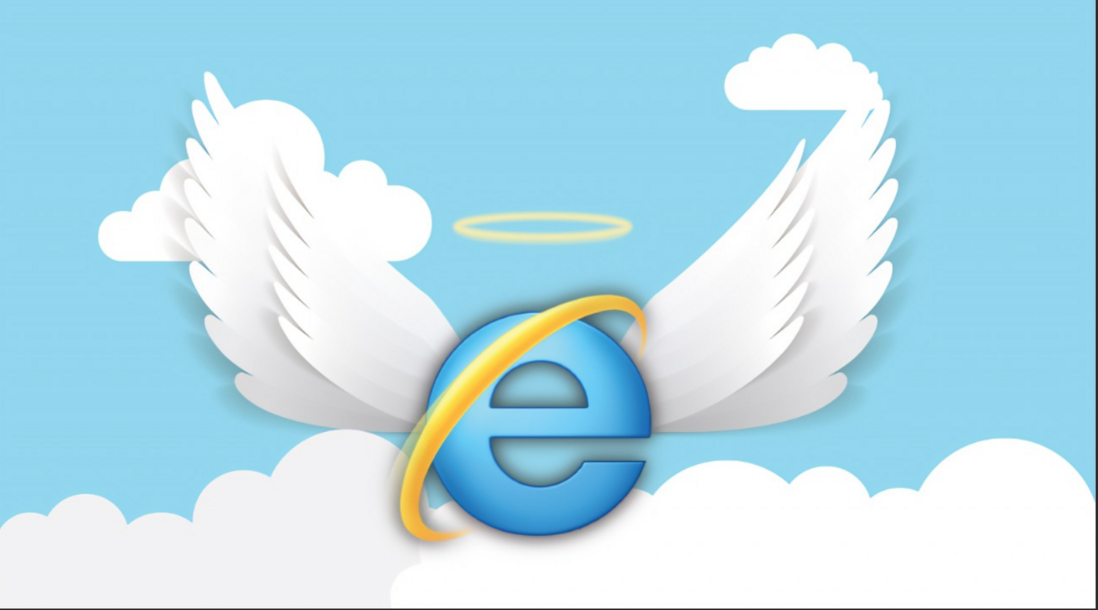As previously announced, the upcoming (June 15 PT) is the day after tomorrow, Microsoft will stop supporting the latest version of its browser, IE11 (Internet Explorer 11), and replace it with its exclusive Microsoft Edge browser.
Up to now, the "retirement" of the IE browser era has entered the final countdown.
(Related reading: From the peak to a "laughing stock" in 27 years, Microsoft announced that the IE browser will finally be retired! https://segmentfault.com/a/1190000041855932 )
IE (Internet Explorer) was originally released in 1995 as an add-on package for Windows 95. Later, the browser was later completely free. Then the 27-year-old web browser reached its peak in 2003, when its global market share was as high as 95%.
However, IE could not maintain its position when competitors with better user interface, smoother performance, and faster functions appeared.
Today, IE is only used to install other browsers, and with the release of Windows 11, Microsoft has finally decided to "retire" this ancient browser.
In May last year, Microsoft said that some versions of its Microsoft 365 online ecosystem service browser desktop applications would no longer support Windows 10; in August, Microsoft announced that its Microsoft 365 service would no longer support IE11 browser.
Sean Lyndersay, program manager for Microsoft Edge, said, "The use of Microsoft Edge gives us a path to the future of the web while honoring the past of the web. Change is necessary, but we don't want to leave those who are trustworthy and still valid. Apps and Websites..."
"Not only is Microsoft Edge a faster, safer, and more modern browsing experience than Internet Explorer, but it also addresses a key issue: compatibility with legacy websites and apps."
Compared to Internet Explorer 11's monthly security updates, Microsoft Edge is also able to release security instant bug fixes "within hours or days."
According to reports, Microsoft Edge has built-in Internet Explorer extension mode and follows the life cycle of current and future Windows client, server and IoT versions and supports at least until 2029, so users can access those older Internet Explorer pages before then. - Based on websites and apps accessed directly from the Edge browser.
Give web developers 8 years until 2029 to update "legacy" applications and eventually eliminate the need for IE mode. Of course, if support for a Windows version ends before 2029, support for IE Mode for that Edge version will also end.
From June 16th, Beijing time, the day after tomorrow, Microsoft Edge will officially become the main web browser that Microsoft focuses on developing, and will eventually permanently disable IE through some future Windows updates that have not been publicly specified. Users also don't have to uninstall IE completely, as Edge's IE mode relies on IE 11 to function.
It is reported that the "retirement" of IE 11 affects Windows 10 client SKUs (version 20H2 and later) and Windows 10 IoT (version 20H2 and later). Products not affected by this include IE Mode in Edge, IE 11 Desktop Windows 8.1, Windows 7 (with Extended Security Updates), Windows Server LTSC (all editions), Windows Server 2022, Windows 10 Client LTSC (all editions) , Windows 10 IoT LTSC (all editions). Also, the IE 11 desktop app is not available on Windows 11 because Edge is the default browser on Windows 11.
As we all know, IE is one of the most "oldest" browsers known to everyone for a long time. Microsoft's announcement of the retirement of IE also marks the end of an era.
So far, after 27 years of use, the "aging" IE browser has finally officially bid farewell to the stage of history. Will you miss it?
Reference link: https://www.zdnet.com/article/june-15-its-the-end-of-the-internet-explorer-era/




**粗体** _斜体_ [链接](http://example.com) `代码` - 列表 > 引用。你还可以使用@来通知其他用户。